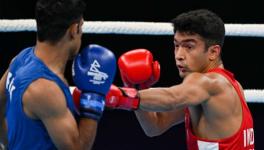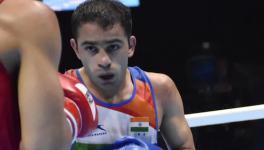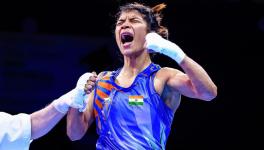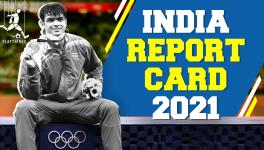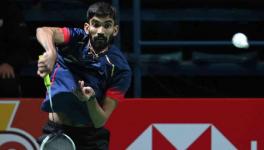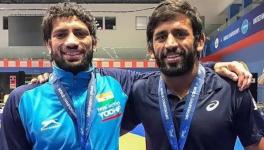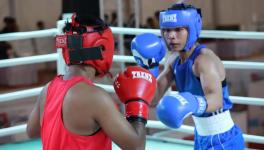Brawler to Artful Dodger, the Evolution of Mary Kom is Complete in Tokyo
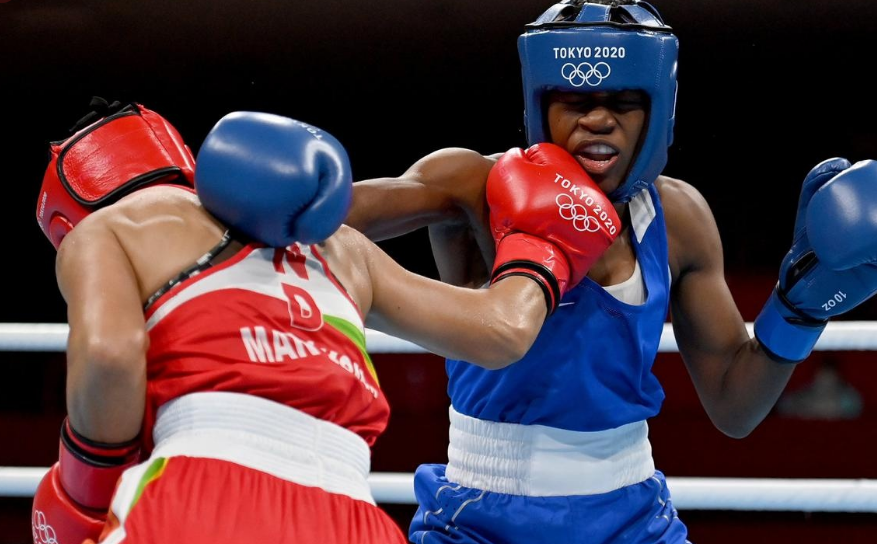
Mary Kom lands a right against Miguelina Hernandez of the Dominican Republic in her opening bout at the Tokyo Olympics on Sunday, July 25.
Peripherally, boxing is a simple sport. Jab, straights, crosses, hooks, uppercuts, weaves... execute these in various combinations, in an unpredictable order, get hit, avoid getting hit, and then repeat it round after round, bout after bout, till... immortality. Just that immortality in the ring is much more complex than victories and medals. There are no guarantees. There is no contract etched with destiny in boxing to start with.
Also, boxing is not governed by an impersonal algorithm which makes measuring greatness easy with numbers or jabs and hooks. In the ring, there is also this small technicality of the other person in front of you, wearing similarly ounced gloves and resolve, trying to shake your brain enough to kick the muscle-memory out of your system. And, the jabs we see and the hooks that land carry emotions, intent, and a bit of pain, even for the puncher.
Ask Vikas Krishan and he will tell you more about the pain when landing a punch. Just that the pain Krishan endured has nothing to do with the emotional toll a punch takes on the boxer. It was a shoulder injury that aggravated when he landed a body jab on his opponent. It was also sheer stupidity, he had no business entering an Olympic ring with just one proper usable hand.
Click | For More Coverage of the Tokyo Olympics From Newsclick Sports
This bit of revelation came out after he lost badly to Japan’s Sewonrets Quincy Mensah Okazawa in the men’s welterweight opener on Saturday. Okazawa danced circles around the Indian, before picking the gaps and the moments to go in and sting, leaving a cut under Krishan’s left eye for posterity even. Before you think otherwise, Krishan’s injury is on the right shoulder and so, no, the cut on the left side of his head is not because he couldn’t have his guard up to block. It was because he was too slow, and looked too dated in the ring.
Sunday. Enter Mary Kom.
Indians need not look too far to understand longevity in boxing, a holy grail only the greatest have found. Longevity, not immortality (just to be clear) that medals and titles, multiple ones, and the incomprehensible factors gift a champion. Longevity is a much more working-class idea. It is sustainability. And in Mary’s case, over the course of a little over 22 years on top of her game, it seems to be a bigger factor than grit and many other intangibles attributed to her.
Also Read | Bad Luck, Poor Form or Lack of Edge? The Case of the Missing Indian Shooting Stars in Tokyo
Watching Mary go about edging out a tricky and younger opponent in Miguelina Hernandez of the Dominican Republic in the opening round of the women’s flyweight division in Tokyo, the change in her was apparent. Glaring even. Mary’s secret is humanity’s secret. Evolution.
Remembering Mary when she won her initial five world titles — the spree that earned her the nickname Magnificent Mary from the amateur boxing world — and her run right up till the bronze at London 2012, three was a distinct rawness about her. Raw aggression. It was almost as if she was forged not in Manipur, but in Mexico City, in the Latin American school of boxing. Go forward, forward again, punch, flurry, brawl even, but pushing to be on the inside and scoring.
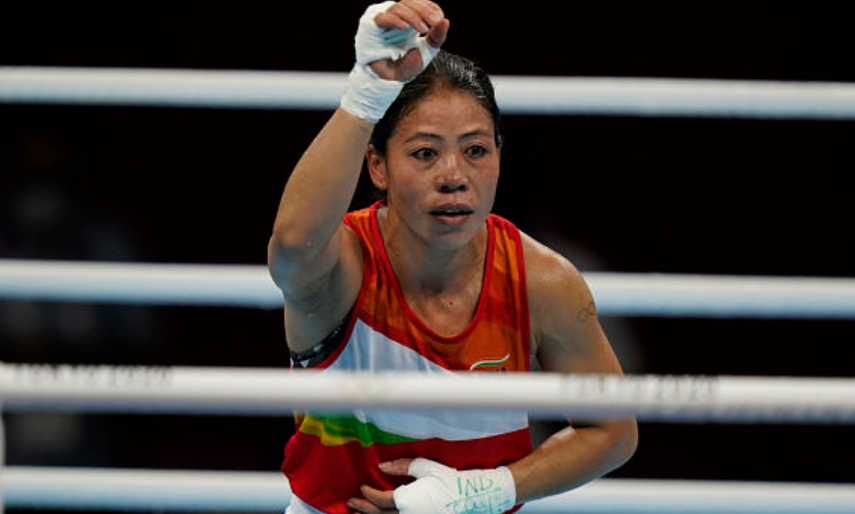
On Sunday, Mary was weaving. We had seen a bit of those, unpolished attempts in fact, almost three years back, at the 2018 Worlds in New Delhi. It was there in 2019 during the ill-tempered selection bout against Nikhat Zareen. But those days, the moves looked awkward and unnatural, executed as though after she suddenly remembered she was supposed to do it, and was introducing those evasive moves between her brawling style of boxing.
Also Read | Mirabai Chanu Completes her Own Perfect Circle in Tokyo
With hindsight now, having seen Mary 2.0 in Tokyo, we can make sense of what was happening back in 2018 or ’19. Mary was changing. To take on substantially younger and faster opponents, she needed to be a little sharp in dodging, unlike earlier years, and then finding the gaps to go in and score. Much like the Japanese kid who dismantled Krishan, in fact, or the British boxer, Luke McCormack, who got the better of Manish Kaushik in the men’s Lightweight division on Sunday.
And scoring — be it via real punches that land or the late-round, late-bout flurries to remind judges of her aggressive intent (a survival trick much needed in amateur boxing) — is something Mary is a master of. Her mastery of the other, completely alien philosophy of boxing, the enchanting dance, could prove to be the difference for her in Tokyo.
Also Read | Five-Point Manifesto to Save the Opening Ceremony
Of course, she is in the round of 16 now, and is a long way away from the medal rounds. Two bouts away to be exact. But damn, Mary has evolved as a fighter, and that invokes hope, and also a bit of joy, for she, despite all those victories in the past, was always a ugly fighter to watch.
That has changed too, and beauty matters in boxing. There is a reason why we remember Akhil Kumar as much as Vijender Singh from Beijing 2008. Medals are great. It is celebrated. But in the middle, and in the collective consciousness of the aficionados, ringcraft remains etched for eternity.
And where Mary stands, 38 years young, eternity and the idea of immortality would probably be superseding the longevity grail she was chasing so far. This is supposed to be her last Olympic Games, after all.
Get the latest reports & analysis with people's perspective on Protests, movements & deep analytical videos, discussions of the current affairs in your Telegram app. Subscribe to NewsClick's Telegram channel & get Real-Time updates on stories, as they get published on our website.










